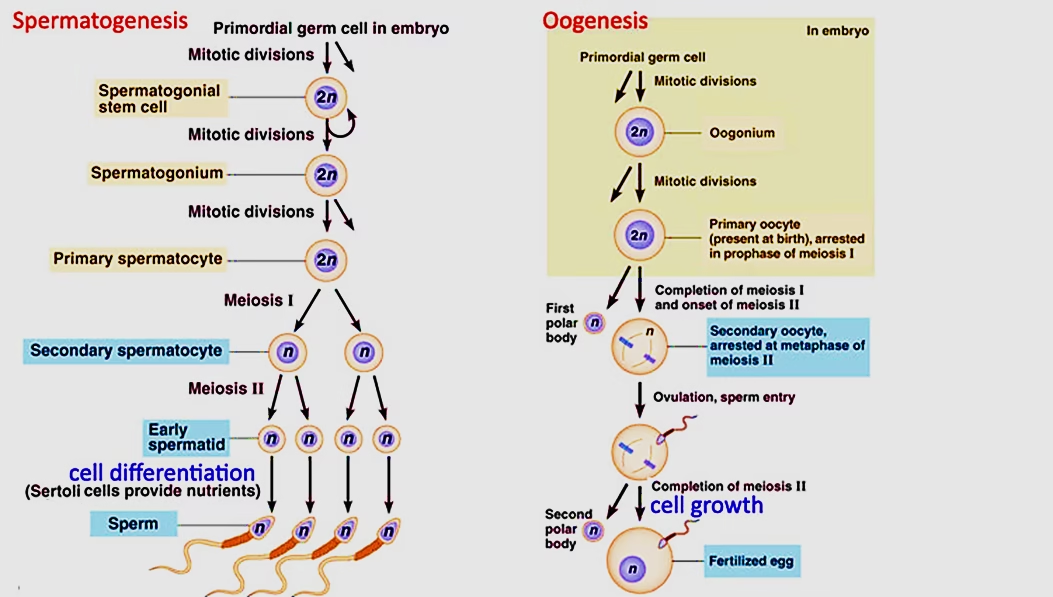1. Asexual Reproduction
- Definition: A mode of reproduction involving a single parent, producing genetically identical offspring (clones).
- Occurrence: Common in unicellular organisms (e.g., Amoeba, Paramecium) and some plants.
- Methods:
- Binary Fission: Cell divides into two identical halves (e.g., Amoeba).
- Budding: Unequal cell division forms buds (e.g., yeast, Hydra).
- Spore Formation: Zoospores (algae), conidia (Penicillium).
- Vegetative Propagation:
- Natural: Runners (grass), rhizomes (ginger), tubers (potato), bulbs (onion).
- Artificial: Cutting, grafting (used in horticulture).

2. Sexual Reproduction
- Definition: Involves fusion of male and female gametes, leading to genetic variation.
- Phases:
- Juvenile Phase: Non-reproductive growth phase.
- Reproductive Phase: Maturity for reproduction.
- Cycles:
- Oestrus Cycle: Non-primates (e.g., cows, dogs).
- Menstrual Cycle: Primates (humans, apes).
- Breeding Types:
- Continuous Breeders: Reproduce throughout the year (e.g., humans).
- Seasonal Breeders: Reproduce in favorable seasons (e.g., frogs).
Key Point: Sexual reproduction enhances biodiversity due to genetic recombination.
- Gametogenesis: Formation of haploid gametes.
- Isogametes: Similar gametes (algae).
- Heterogametes: Distinct male (sperm) and female (egg) gametes.
- Cell Division:
- Haploid parents: Mitosis.
- Diploid parents: Meiosis (via meiocytes).
- Gamete Transfer:
- In Plants: Pollination (pollen grain → stigma).
- In Animals: Male gametes are motile; external (water) or internal (terrestrial) transfer.

4. Fertilisation (Syngamy)
- Definition: Fusion of gametes to form a diploid zygote.
- Types:
- External Fertilisation: In water (e.g., fish, frogs).
- Internal Fertilisation: Inside female body (e.g., mammals).
- Parthenogenesis: Zygote forms without fertilisation (e.g., honeybees, rotifers).
Key Point: External fertilisation risks high offspring mortality due to predators.
5. Post-Fertilisation Events
- Zygote Formation:
- Diploid zygote develops into an embryo.
- In oviparous animals, zygote forms a hard shell (e.g., birds).
- Embryogenesis:
- Oviparous: Egg-laying (e.g., reptiles).
- Viviparous: Live birth (e.g., mammals).
- In Plants:
- Zygote → Embryo → Seed → Fruit (dispersal).

